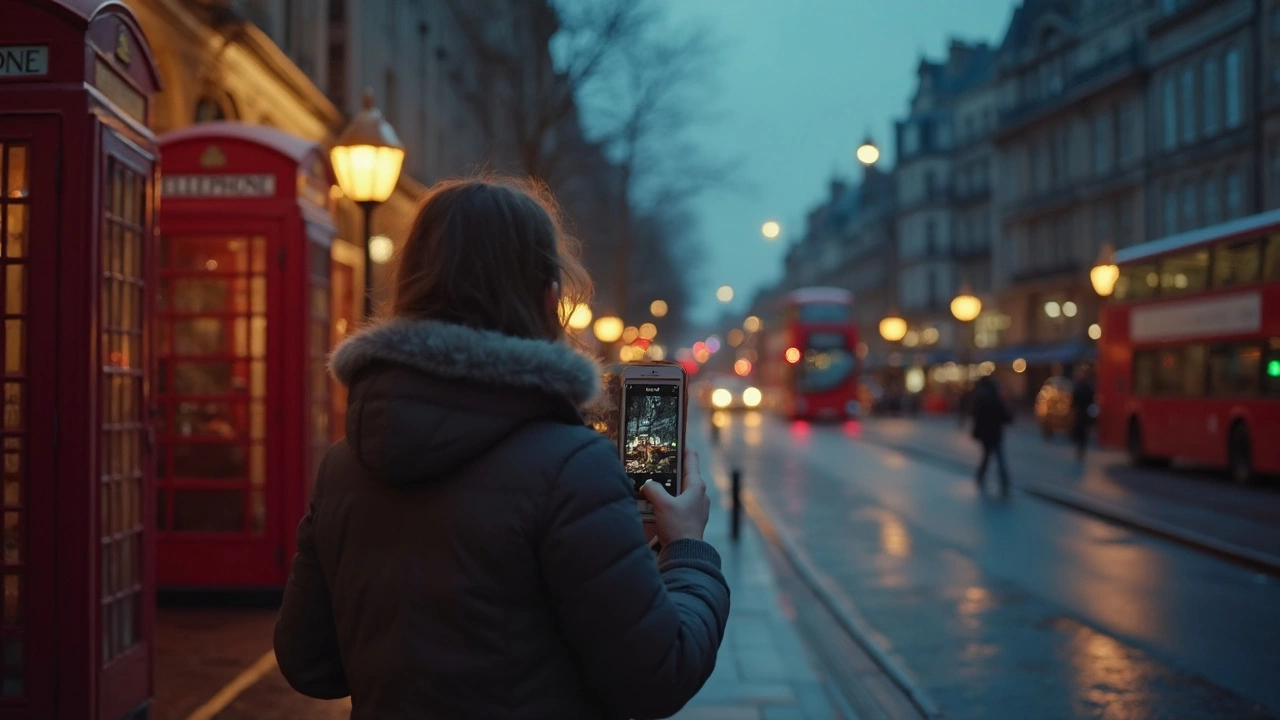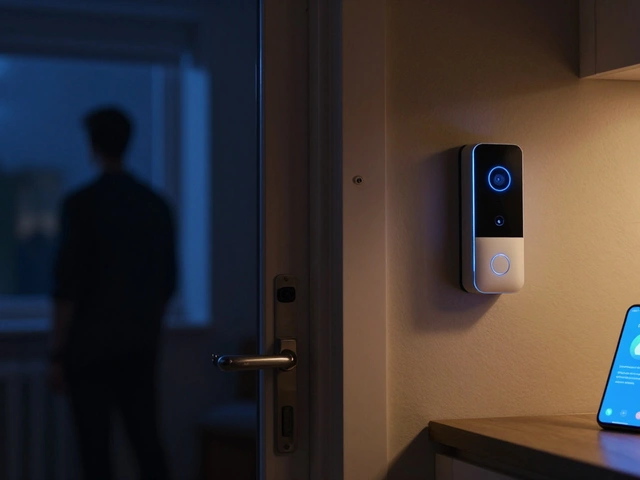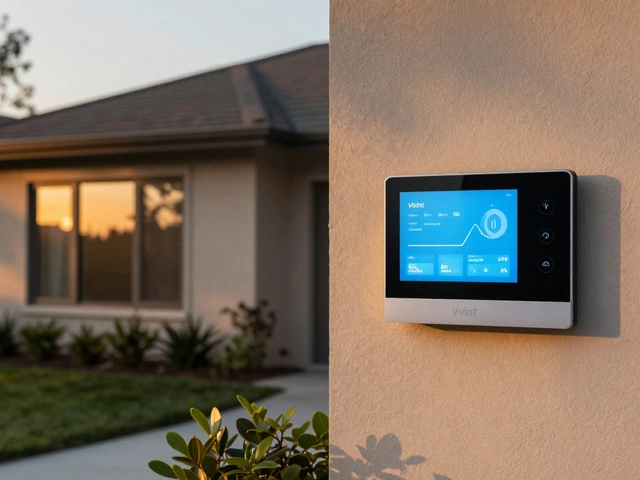Ever whipped out your phone to snap a photo at night and wondered why it doesn’t look anything like those green night vision shots in movies? You’re not alone. Loads of people ask if their phone cameras have real night vision or if it’s just marketing magic.
Here’s the deal: regular smartphone cameras aren’t built the same way as military night vision goggles. Those cool green videos you see online use special sensors that pick up invisible infrared light—something your phone just doesn’t do. Your phone relies on software tricks and its sensor getting better at sucking up whatever tiny bit of light is around.
If you’ve used ‘Night mode,’ you’ve probably noticed brighter, clearer selfies in dim rooms, but it won’t make your backyard look like daylight. It’s great for helping you see your friends at a concert but not for spotting your dog in a pitch-black yard.
- Smartphone Cameras vs. True Night Vision
- How Night Mode Actually Works
- Can Phones See in Complete Darkness?
- Tips for Better Low Light Shots
- When You Might Need Real Night Vision Gear
Smartphone Cameras vs. True Night Vision
It's easy to get mixed up between what your smartphone camera can do at night and what actual night vision gear offers. Let’s break it down. Real night vision goggles or cameras work by picking up infrared light—stuff your eyes can’t see. These gadgets use image intensifier tubes or special sensors to amplify whatever little light is around, including light way outside the range of a normal camera. That’s how they give you that classic green-tinted view, even in pitch-black environments.
Now, compare that to your phone. Most smartphone cameras just don’t have the hardware to pick up infrared light by default (some have little IR sensors for facial unlocking, but those aren’t for photography). Instead, phones rely on a mix of bigger sensors, fancy software algorithms, and sometimes multiple cameras to improve low-light performance. They take in as much visible light as possible, maybe even snapping a burst of shots and merging them together to get a brighter result. But they’re not seeing anything outside what a human eye could pick up in a dark room.
Here’s a simple comparison to lay out the difference:
| Feature | Smartphone Camera | Night Vision Gear |
|---|---|---|
| Uses IR Light for Photos | No | Yes |
| Works in Total Darkness | No | Yes |
| Special Night Vision Sensors | No | Yes |
| Night Mode/Software Tricks | Yes | No (hardware-based) |
This means that if you’re walking through a pitch-black forest, your smartphone isn’t going to magically light up the scene the way a real night vision device would. But for those dimly lit birthday parties or cityscape shots at dusk, your phone’s low light features and night mode can help a lot—just don’t expect secret agent results.
How Night Mode Actually Works
This is where night mode flexes its muscles. Smartphone makers got clever—they knew their regular camera sensors weren’t designed for the dark. So, instead of relying on hardware like bulky night vision goggles, they baked the magic right into the software. Night mode kicks in when your phone detects low light, doing a few key things in the background without you really noticing.
- Multiple Exposures: The phone snaps several photos in super quick bursts. These are like layers, each capturing tiny bits of light the human eye barely sees.
- Image Stacking: Your phone blends the sharpest parts from each shot, reducing blur from shaky hands. This creates a clearer, brighter photo.
- AI Enhancement: Modern phones use artificial intelligence to brighten up faces, pull details out of shadows, and balance out washed-out lights—making everything look smoother and less noisy.
It all happens in just a few seconds. If you hear a soft shutter click and see your screen say "Hold Still," that’s your phone busy stacking shots under the hood. The end result? Low-light photos that pop a lot more than you’d expect from a tiny camera sensor.
"Our Night Sight feature on Pixel uses machine learning to fill in missing color and detail, so you get photos that look natural, not washed out or fake." — Marc Levoy, former Google Distinguished Engineer
Numbers back this up too. According to a DXOMARK test, photos in night mode are up to 90% brighter, with much less blur, compared to the normal shooting mode on flagship phones like the iPhone and Galaxy series.
There’s one thing night mode can’t do, though—it needs at least a little light to work its magic. No amount of clever coding can make something appear out of pure blackness. That’s the big difference between night mode and genuine night vision gear that’s built for total darkness.
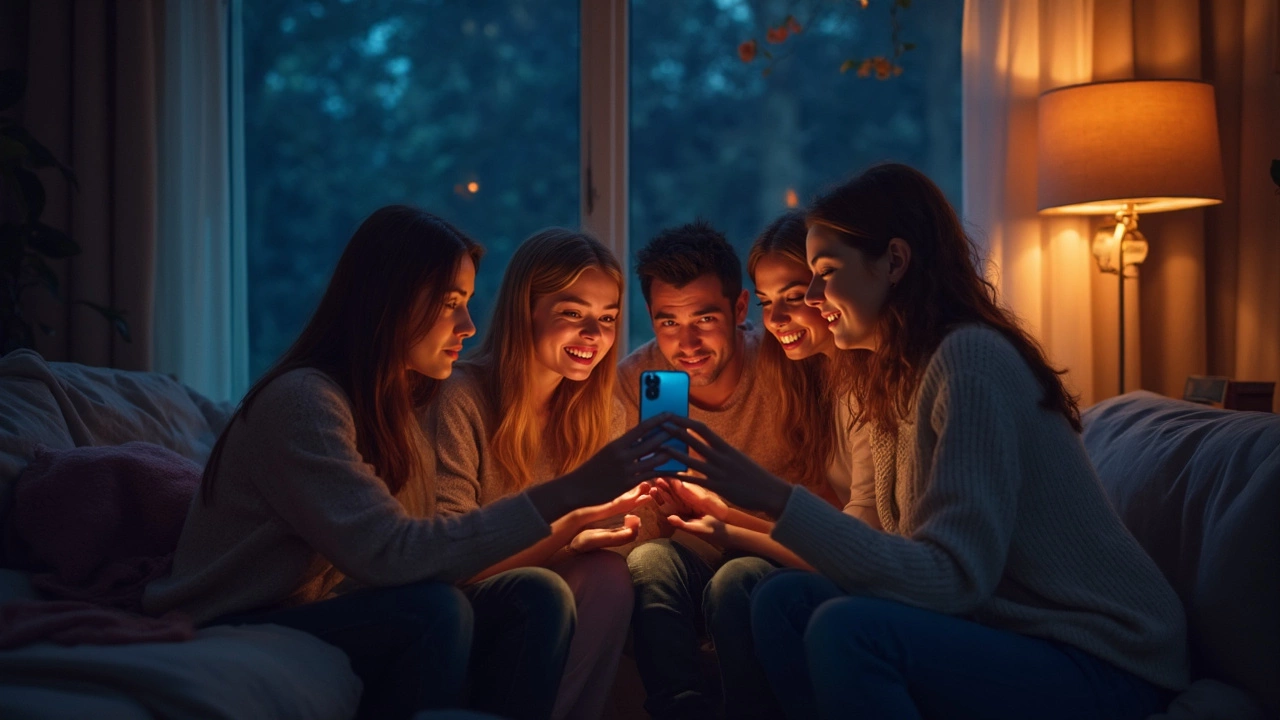
Can Phones See in Complete Darkness?
This is where a lot of people get confused. Your smartphone camera might seem super advanced, but in pitch-black conditions, it’s just as lost as your eyes. Here’s why: standard phone cameras (including all those top flagship phones) can’t actually see if there’s zero light. They need at least a little bit for their sensors to pick up an image.
Unlike proper night vision gear, which uses either infrared light or special image intensifiers, your phone’s sensor just collects whatever visible light it gets—no sci-fi tricks involved. Night mode? It’s still just grabbing and boosting whatever faint light is available, sometimes by taking several images and blending them together.
Want some numbers? An iPhone 15 Pro Max or a Galaxy S24 Ultra both struggle to capture anything in a pitch-black room, even if you max out exposure or tap on night mode. The sensors simply aren’t designed to work with zero light.
There are some third-party add-ons (like thermal camera attachments) that connect to your phone and can "see" heat, but that’s not the same thing as real-time night vision. Those are specialty accessories—not built into your phone out of the box.
If you try to take a picture in a room where you literally cannot see your hand in front of your face, your phone will show you nothing except black or maybe a tiny bit of digital noise. Here’s what smartphone cameras need to even show an image:
- Some source of light (could be a candle, city glow, or the phone’s own flash)
- Advanced software to boost and clean up the image
- A steady hand or a tripod to avoid blur during long exposure
Bottom line: No, your smartphone isn’t giving you spy-grade night sight. If you need to see in the total dark, you’re better off with a flashlight or actual night vision equipment.
Tips for Better Low Light Shots
If you’re hoping your smartphone can handle a night out or a dim-lit hang without looking like a blur, you’ll want to keep a few tricks up your sleeve. Most cameras on phones have gotten way better, but you’ve got to help them out. Here are some down-to-earth tips to squeeze the most out of your night mode or regular low-light captures.
- Hold Steady: This sounds obvious, but it makes a massive difference. In low light, the camera usually needs a longer exposure, so even the tiniest wiggle can ruin the shot. Prop your elbows on something or lean on a wall if you don’t have a tripod.
- Clean Your Lens: Pocket lint or fingerprint smudges scatter the little bit of light you actually have and make photos even softer. Wipe the lens with a shirt before you snap.
- Use Night Mode, but Don’t Overdo It: Night mode helps a lot, but if your hand or subject moves during a long capture, it’ll get weird. Remind people to stay still too.
- Add Light When You Can: If there’s a street lamp, neon sign, or even your buddy’s phone flashlight, bring it into play. Even a tiny boost makes your pics sharper and more colorful.
- Tap to Focus: Phones sometimes struggle to lock focus in dim scenes. Tap on your subject’s face or whatever you want sharp. Sometimes you can also control brightness with a swipe up or down after you tap.
- Avoid Zooming In: Your smartphone camera usually crops the photo if you zoom digitally, which in low light just blows up the grain and blur. Step a bit closer if you can.
- Turn Off the Flash: Unless you want flat, weirdly harsh lighting, skip the phone’s flash. It almost always just creates ghost faces and over-bright spots.
Some phones now have larger camera sensors, so they really do capture more light. For example, the iPhone 15 Pro and Samsung Galaxy S24 Ultra are rated up to 100% better in low light compared to their previous generations, based on lab test numbers. Here’s a quick table with real-world data:
| Phone Model | Low Light Sensor Size (mm) | Night Mode Improvement |
|---|---|---|
| iPhone 15 Pro | 1/1.28 | Up to 2x sharper images |
| Samsung S24 Ultra | 1/1.3 | Brighter & 40% less noise |
| Google Pixel 8 Pro | 1/1.31 | Better color accuracy |
You don’t need pro-level gear to get a good shot at night with your smartphone. Just a bit of patience, steady hands, and knowing when to add a little light gets you most of the way there.
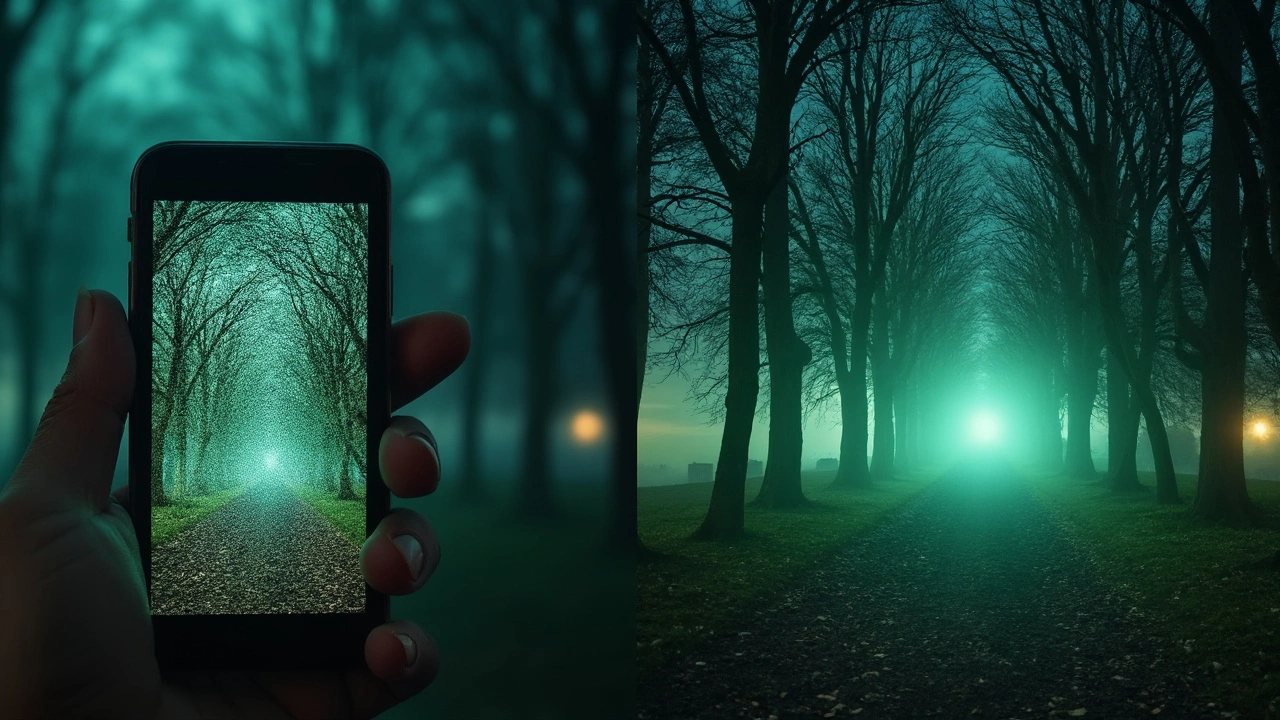
When You Might Need Real Night Vision Gear
Smartphones can do a lot in low light, but there are situations where even the best smartphone or night mode just won’t cut it. If there’s not a single light source—think forests at midnight or dark camping trails—your phone camera will give you a whole lot of nothing. That’s where real night vision comes in.
True night vision tech lets you see what your eyes can’t. Night vision goggles and dedicated night vision cameras use sensors that pick up infrared light. They show you a scene even when it feels pitch-black. That’s how security guards spot trespassers in total darkness and how wildlife researchers can film animals at night without scaring them away.
You might actually need the real deal if you’re in one of these situations:
- Hiking, camping, or exploring after sunset in areas without any ambient light (no street lamps, no house lights).
- Wildlife watching or filming when you don’t want to spook animals with a flashlight.
- Security work or property surveillance at night—especially for large open spaces without outdoor lighting.
- Search and rescue teams working in the dark, where every second counts.
Phones simply don’t have the sensors needed for true dark vision. As imaging expert Mark Petersen put it,
"Your smartphone's night mode is just a clever way of squeezing the most out of small sensors; genuine night vision gear actually creates an image from almost zero visible light."That’s why you see that eerie green glow in night vision videos—it’s the tech picking up on light you can’t even see.
If you’re comparing, here’s a snapshot of the differences:
| Feature | Smartphone Night Mode | Real Night Vision Gear |
|---|---|---|
| Works in total darkness | No | Yes |
| Sensor type | Visible light only | Infrared/near-infrared |
| Best use | Dim indoor scenes, city streets | Outdoors, surveillance, wildlife, security |
| Infrared capability | None | Yes |
Bottom line: if you’re just taking photos with friends at low-lit restaurants, your phone’s camera technology and night mode features are plenty. But if you need to see in true darkness, whether you’re out in the woods or securing your backyard at 2am, it’s time to reach for real night vision gear.

